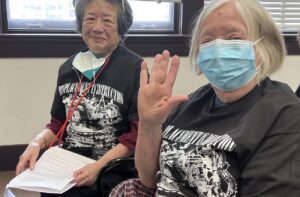originally published on Mar. 23, 2023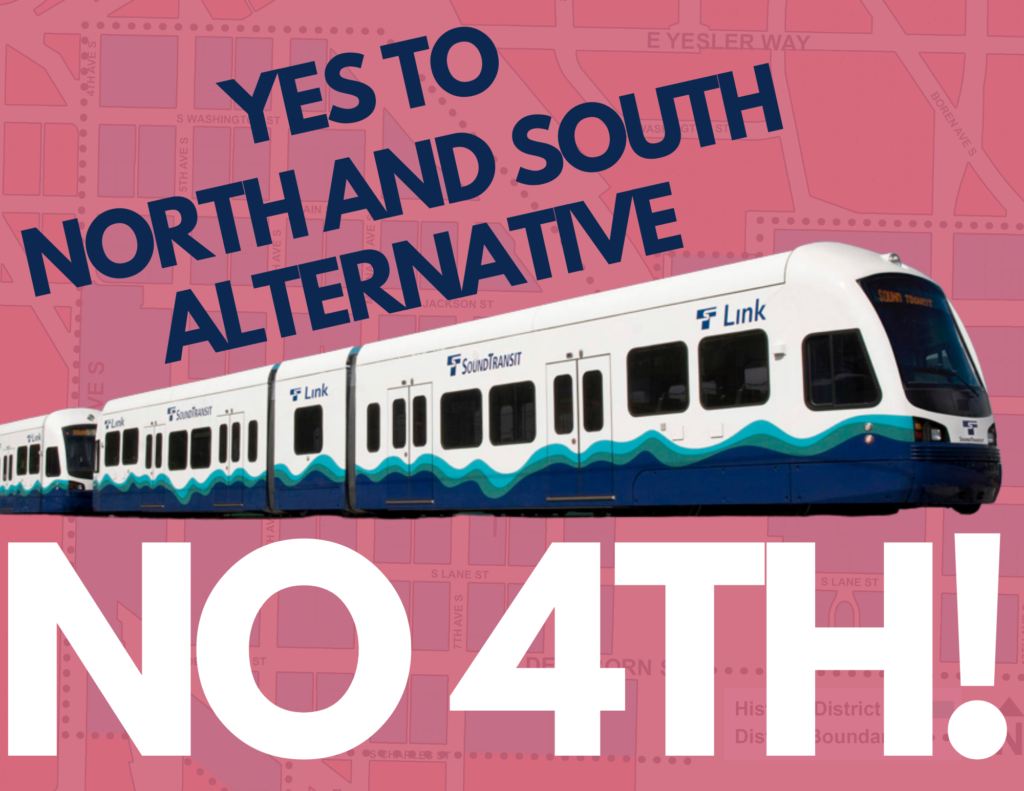
Go North/South, not 4th Avenue!
Puget Sound Sage stands with over 300 non-profit organizations, community leaders, elders, and small businesses that demand that Sound Transit move its proposed new Chinatown International District (CID) station on the West Seattle Ballard Link Extension just north and/or south of the neighborhood.
Addressing some of the most frequently asked questions about Sound Transit’s North and South light rail alternatives:
“Doesn’t most of the CID community want 4th Ave?” No community is a monolith, and ours is no exception. More than 300 residents, workers, small businesses, organizations, and long time leaders have signed onto our letter supporting the North South alternative. Our vision and values are for a CID where everyone in our community has access to housing, transit, and real safety, not just property owners, housed residents, and those aligned with capital and commerce. Many of those who support 4th also support sweeps, increased policing and criminalization, and the gentrification of the CID.
“Why would 4th Ave cause displacement but North and South would not?” Construction along 4th Ave is projected to be a decade or more due to additional risks of building on liquefaction prone soil. 4th Ave is also a main arterial road with high capacity, meaning many more cars would need to be diverted with not many places to go except through the CID. It is also a main thoroughfare for Metro, and buses would have to be rerouted through the core of our neighborhood. In addition to the construction duration and traffic rerouting concerns, there is no opportunity for equitable transit oriented development. This is one very important avenue we have to ensure affordable housing is built in our neighborhood. We do not believe that the threats the 4th Ave hub poses can be addressed through mitigation. Whereas, supporting the North South options project a shorter construction duration by nearly half the time and have traffic rerouting and construction hauling paths that lessen disruption to the CID core.
“What are the traffic impacts on 4th Ave?” Per Sound Transit studies, at peak hour, 2,300 vehicles are expected to pass through 4th Ave. 50% is expected to be diverted. This is 1,150 vehicles each hour. Sound Transit modeling indicates the CID neighborhood can absorb up to 160-180 diverted vehicles per hour in the historic CID core. Where will the remaining 970 vehicles per hour be diverted? This means the neighborhood will experience gridlock every weekday during peak hours for 9 to 11 years and this doesn’t even consider game and event days.
Another significant concern is disruption to bus service with traffic congestion, rerouting and bus service disruption during the 6-year partial closure of 4th Ave and the 4 years of a full closure of 4th and Jackson during which no buses will be able to move through there at all and will be rerouted to 5th Ave. These transit delays will not only impact CID residents but service to the Rainier Valley as well, as cited in the racial equity toolkit. BIPOC workers and seniors in the CID who use metro as their predominant mode of transportation will be significantly impacted.
“What about the Midtown Station?” The North CID would serve Midtown. It would be connected to the Rapid Ride G. It would also provide Midtown connectivity to all three lines of transit. There were major issues with the previous Midtown proposal, it was a deep station and only connected to the Ballard to Tacoma line – Midtown riders would’ve had to make a transfer. The North station is also in closer proximity to Harborview.
Opinion Pieces co-written with Chinatown-International District Community Leaders
The 4th Ave Station Is a Train Wreck for the CID and Seattle Must Avoid It
With the north and south option, our families and communities can savor a sense of belonging, knowing that preservation of our histories was intentional, and not merely an afterthought. Read more.
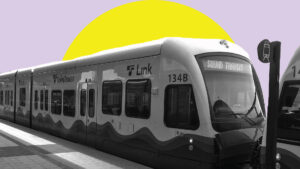 Opinion: Sound Transit must recommend north and south CID light rail options
Opinion: Sound Transit must recommend north and south CID light rail options
Sound Transit cannot let our treasured Chinatown International District become collateral damage for yet another regional infrastructure project, when there is a better alternative. But that’s just what will happen if 4th Ave and Jackson is torn up for a decade – or more – to build a new CID station on the Ballard to West Seattle light rail extension. Read more.
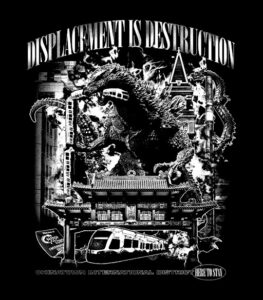 COMMENTARY: Destroying the CID is not a justifiable when there is a better alternative
COMMENTARY: Destroying the CID is not a justifiable when there is a better alternative
10 years of construction will likely result in permanent displacement of businesses, residents, and community spaces. We don’t want to be like the many Chinatowns across the U.S. that have disappeared over the last 50 years because of racism, redevelopment, and infrastructure projects. Read more.
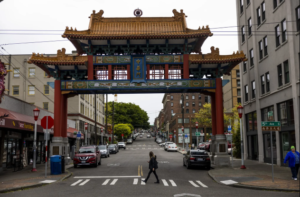 Two light-rail station options would better serve, protect Chinatown International District
Two light-rail station options would better serve, protect Chinatown International District
We refuse the notion that it is justifiable or acceptable for the CID to be collateral damage yet again for an infrastructure project that mostly benefits other communities — especially when there is a better alternative. Read more.
Program Updates
Quick 30-second action to support I-135 Social Housing today
Submit a letter in support of a budget proviso to get Social Housing off the ground!
Help secure a budget proviso proposed by Representative Frank Chopp and Senators Joe Nguyen and Rebecca Saldaña. The proposed ~$900,000 will help cover start-up costs for the Seattle Social Housing Developer.
House Our Neighbors has created a template letter that can be sent to all 18 state legislators that represent Seattle. Please take 30 seconds to send a letter now! Send a letter today.
Applications for the next Community Leadership Institute Fellowship (King and Pierce County) are now open!
Open to all applicants in King and Pierce Counties or can attend in person in Seattle, WA
Our Community Leadership Institute (CLI) is a fellowship program that resources, trains, and places emerging leaders from communities of color and low-income communities to serve on strategic municipal boards and commissions.
Launched in 2015, the six-month fellowship trains emerging leaders in issues such as housing, land use, transit, climate, and economic development. Graduates learn the nuts and bolts of local government processes, such as municipal budgeting, parliamentary procedures, and lawmaking, as well as advocacy, storytelling, and communication skills.
After graduation, the fellows apply for and are placed on strategic boards, commissions, and task forces at the city and county level. Through participation, CLI alums have the opportunity to move forward a racial equity agenda at a government level by asking critical questions about who benefits and who is burdened by policy decisions and offering solutions that integrate community participation and perspectives as part of the decision-making process. Read more and apply here.
Attend an online Information Session to learn more about the fellowship:
- Tuesday April 11, 5pm-6pm (RSVP here)
- Thursday April 27, 5pm-6pm (RSVP here)
In the News
What Seattle’s Green New Deal reveals about creating inclusive, regenerative, just communities. The green revolution will not be won by presidential proclamation or congressional decree. It will be won city by city, neighborhood by neighborhood, day by day.
Washington holds first carbon auction, determining price of $48.50 per ton. Puget Sound Sage, argued that cap-and-trade policies are a poor way to measure the human cost of climate change. Worse, that they’re ultimately a boon for corporations, creating a new financial product to resell and allowing polluters to continue polluting.
What It Really Costs When Walmart Comes to Town. An analysis conducted by Puget Sound Sage in 2012 asserts that each new Walmart store decreases the local community’s economic output over 20 years by an estimated $13 million.
Advocates call for shutdown of King County jail after mounting death toll in facility. “We are here because last April, one of those deaths was Michael Rowland,” Aretha Basu, Sage’s Political Director, said. “Sixty-three years old, he was Black, disabled, unhoused and killed within half an hour of arriving at the jail.”
Placement of future CID light rail station sparks heated debate, strains relations. “We have been working with, in coalition and in partnership, with our transit orgs and we want to see them make good on their promise that they would center communities of color in decision making, prioritize affordable housing and maximize opportunity for equitable transit oriented development opportunity,” Shimizu said. “And right now we’re seeing a lot of those transit orgs fall back on their promise to be accountable to communities of color, and we’re really disappointed.”
Debate over proposed CID light rail station heats up. “We believe that the Fourth Avenue option is just too risky, and that it would be a disaster for the Chinatown International District,” said Christina Shimizu, executive director for Puget Sound Sage and a member of the CID Coalition. “Ten years of construction would be a disaster for the Chinatown International District, and we know that disasters are perfect opportunities for gentrification.”
Councilmember Morales Declares Support for North & South CID Station Placement alongside Neighborhood Leaders. “Comprehensive planning must take into account many factors including opportunities for equitable transit-oriented development and affordable housing, cultural and historical preservation, the economic precarity of proposed station locations, and racial equity.”


